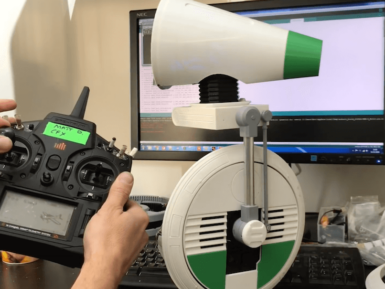
16x2 LCD display with I²C interface
2-line, 16-character alphanumeric LCD display with HD44780 controller, blue backlight, white characters, and I²C interface.
Overview
Particularly suitable for reducing the number of I/Os required when used with Arduino or other microcontroller, the I²C interface has jumpers to activate the backlight and contrast adjustment which is carried out via a small trimmer.
Tech specs
- Power supply: 2.5-6 Vdc
- Dimensions (mm): 80x36x19
- Weight: 100 grams
Conformities
Get Inspired

This code sets up an Arduino device to connect to WiFi and communicate with the OpenAI API. It uses the Adafruit_SSD1306 library to control a small OLED display, displaying messages and responses from the API. The device sends a prompt to the API asking "What is Arduino?" and waits for a response, which it then displays on the OLED screen. This is done using a secure SSL connection, and the API key is stored as a variable in the code. Overall, this code demonstrates how an Arduino device can be used to interact with web services and display data on a small screen.

While it’s yet to make its premiere, Matt Denton has already built the D-O droid from Star Wars: The Rise of Skywalker using a MKR WiFi 1010 for control, along with a MKR IMU Shield and a MKR Motor Carrier. The droid scoots around on what appears to be one large wheel, which conceals the Arduino boards as well as other electronics, batteries, and mechanical components. Denton’s wheel design is a bit more complicated mechanically than it first appears, as its split into a center section, with thin drive wheels on the side that enable differential steering. On top, a cone-shaped head provides sounds and movement, giving the little RC D-O a ton of personality. The droid isn’t quite finished as of the video below, but given how well it works there, the end product should be amazing!






